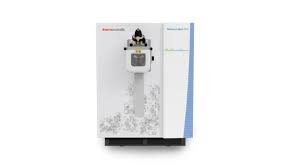Thursday, 13 November 2025
Australian wine sector sees signs of adjustment, but red stocks remain high
Australian Wine Production, Sales and Inventory Report 2023-24 Total sales of Australian wine exceeded production for the second year in a row, following successive small vintages, according to the Australian…

Australian Wine Production, Sales and Inventory Report 2023-24
Total sales of Australian wine exceeded production for the second year in a row, following successive small vintages, according to the Australian Wine Production, Sales and Inventory Report 2024 released by Wine Australia.
Wine production was just over 1 billion litres (116 million 9-litre case equivalents), an 8 per cent increase compared with 2022–23 but still the second-smallest reported production in 17 years, and 16 per cent below the 10-year average of 1.24 billion litres.
Peter Bailey, Manager, of Market Insights at Wine Australia said that the below-average production from the small 2024 vintage was the result of a combination of seasonal factors and economic and market conditions.
“This was another difficult season in many regions, with heavy rainfall and flooding, widespread windy conditions affecting flowering, and dry spring weather leading to cold nights and the potential for frost damage,” Bailey said.
“However, the result has also stemmed from deliberate decisions by grape growers and wine businesses to reduce production or intake, driven by the current economic and market conditions affecting demand for wine.”
The overall increase of 8 per cent compared with 2022–23 was made up of a 20 per cent increase in white wine production, partly offset by a 2 per cent decrease in red wine production. This saw white wine’s share of production increase from 46 per cent to 51 per cent — the first time in 12 years that the production of white wine has exceeded that of red wine in Australia.
Bailey said that this change reflected adjustments made by the sector to counter the oversupply of red wine that had arisen over the past three years.
The total volume of sales of Australian wine in export and domestic markets was 1.08 billion litres (120 million 9-litre cases). This was a decrease of 1 per cent compared with 2022–23, with both domestic and export sales showing very small declines. Contrary to the change in share of production, white’s share of total sales declined due to a 4 per cent growth in red wine exports.
Bailey explained that the growth in red wine exports was driven by the re-commencement of exports to mainland China following the removal of import tariffs in late March 2024. The volume of exports to China grew from 1 million litres to 32 million litres (5 per cent of total wine exports) in the 2023–24 financial year, almost all of which (96 per cent) was red table wine. However, he cautioned that this was likely to represent the re-stocking of Australian wine in the market after a long absence, and did not necessarily equate to retail sales.
“It will take some time before there is a clearer picture of how Chinese consumers are responding to the increased availability of Australian wine in–market.”
Despite the decline in sales, the below-average production meant that sales exceeded production, with the combined shortfall over the past two years being estimated at 155 million litres. This contributed to a 10 per cent reduction in inventory as of 30 June 2024 and a corresponding decrease in the stock-to-sales ratio (SSR), which fell by 14 per cent to 1.82. The SSR for white wine fell to below its 10-year average, while the SSR for reds remained 15 per cent above its 10-year average despite falling by 23 per cent over the past two years
Technology
Tetra Pak opens Product Development Centre in France
Nov 13, 2025 | Company News
MENU ORDER AI to launch app aimed at GLP-1 users and health-conscious diners
Nov 10, 2025 | Company News
Harnessing Quantum AI for Greener Minds and Healthier Futures
Nov 10, 2025 | Interaction
Food Testing
Intertek acquires Costa Rican testing business Suplilab
Nov 07, 2025 | Company News
Thermo Fisher Scientific launches Orbitrap mass detector for food safety testing
Oct 24, 2025 | Company News
ADM advances quality capabilities with opening of new Central Milling Laboratory
Oct 16, 2025 | Company News
More Popular
Syren Spreads launches spoonable adaptogenic beauty chocolate
Nov 13, 2025 | Company News
Gunpowder Irish Gin expands with new Italian Fig & Laurel Expression
Nov 13, 2025 | Beverages
8 winter foods that transform your skin by healing your gut first
Nov 13, 2025 | Beverages






